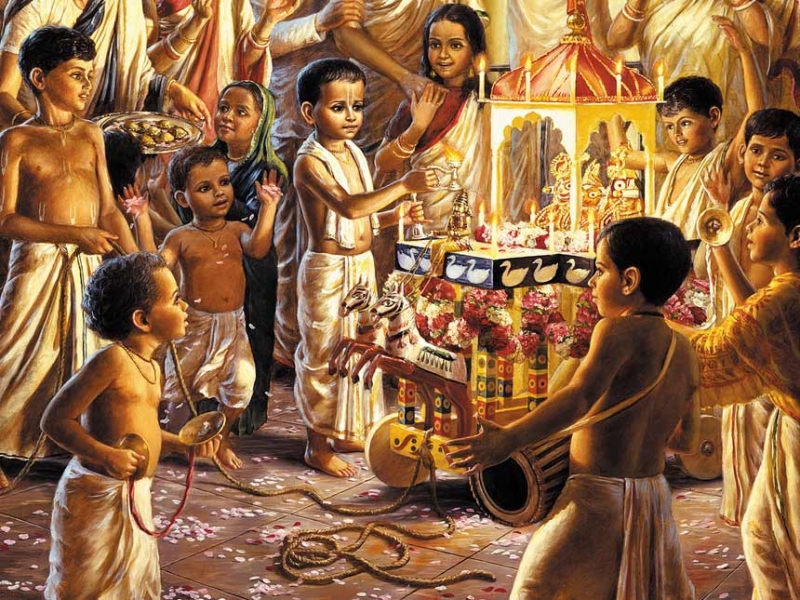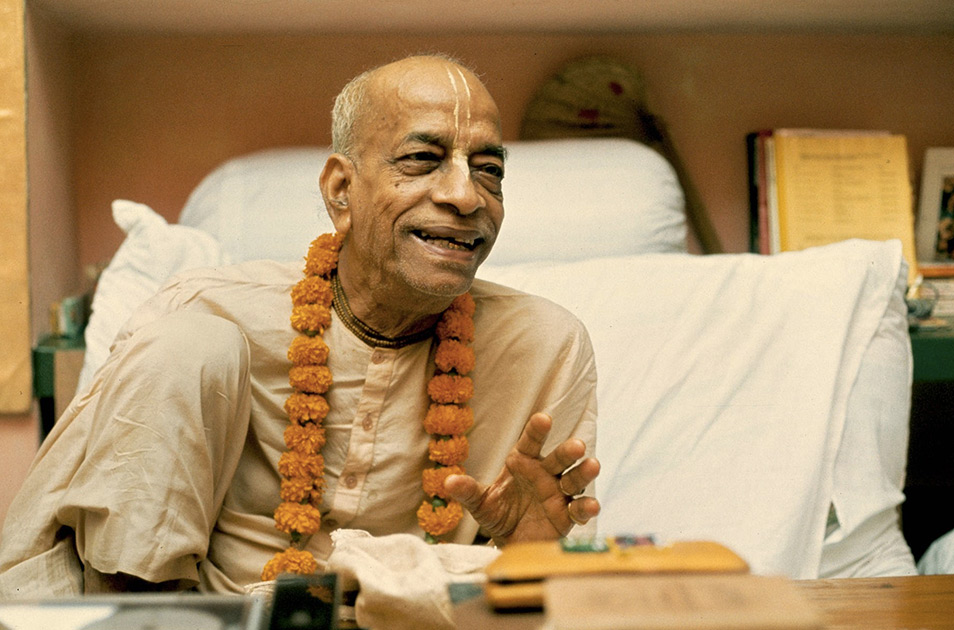
Srila Prabhupada Letter to Hayagriva, November 18, 1968, Los Angeles: So, reprinting the volumes will have to wait until the mistakes are corrected and approved by me.” Nitai may correct whatever mistakes are there, but the corrected material must be sent to me for final approval. I saw some changes which I did not approve. I was not satisfied with the corrections that were made before. “I will have to see personally what the mistakes in the synonyms are, and also how you intend to correct them. Srila Prabhupada Letter to Radhavallabha, January 5, 1976, Nellore: I am glad to see that some Hindi translating is going on but what about that other boy who was translating The Srimad-Bhagavatam in Vrindaban? Do not do anything whimsically in future, and you can write me if you have questions concerning the printing.” It has been spelled Chattakara Road But it should be Chattikara Road. Who is translating this? Also, the address on the back of our Vrindaban Temple is not correctly spelled. Concerning the Bhagavat darsana cover, this Hindi on the back is not good. You could have done this on the front cover with Krishna and Arjuna on the Battlefield of Kuruksetra, but the cover must not be changed. Just as you did with the inside back cover of the Bhagavat darsana, the original picture of Sri Caitanya Mahaprabhu was in color but you have printed it in black and white. You could have taken a color picture of Krishna and Arjuna and used it black and white (one color) on the front cover.

Also, the lettering is not nice on the cover. Because there is no bread, you take stone to eat? There is no stock of bread so you will take stone? The front picture is most important thing and you have changed it. It is not that because there is no stock we can do whimsically as we like and lose the idea, that is rasa-bhasa. That chariot drive by 4 horses, that is the real Kuruksetra picture. Simply because there is no stock of books, we can do anything whimsically? Is this logic? Gita is not spoken in Vrindaban, it is spoken on the battlefield of Kuruksetra, but this is Vrindaban picture. In future you don’t do any changes without asking me first. You have done a great mistake by changing the front picture and it will hamper the sale. Why change the cover? When people look to see the Bhagavad-gita they expect to see Krishna and Arjuna, not the picture of Krishna with cow. No, the printing of the Gitar-gan cover this fashion is not at all approved by me. “I am in due receipt of your letter dated May 25, 1976, along with samples of the Gitar-gan and the cover in for the Bhagavat-darsana. Srila Prabhupada Letter to Bhargava, May 29, 1976, Honolulu: Examples of this can be seen in these quotes: The first fact to consider is that Srila Prabhupada did not want his disciples to change his books without his authorization. In the case of the first printings of the first four Cantos we have sufficient evidence that these versions have been authorized by Srila Prabhupada, however in this article we would like to point out a lack of substantial evidence of Srila Prabhupada approving the later printings. We have also found evidence of reediting in certain volumes of the Third and Fourth Canto. He has also reedited the 1972 Second Canto shortly after the 1972 version had been printed. Later on, Jayadvaita, another chief editor of Srila Prabhupada’s books, reedited the 1972 version of the First Canto and it was printed in the late 1976. After this Hayagriva reedited two more books - Easy Journey to Other Planets (from 1957-8? version) printed in 1972 and Teachings of Lord Caitanya (from 1968 version), printed in 1974.

Thus the 1972 version of the First Canto came about. Srila Prabhupada published this book in India in the early 1960′s and upon his arrival to America he instructed his disciple, Hayagriva das to revise it.


The first-time reediting of Srila Prabhupada’s books had been undertaken was in the case of the First Canto of the Srimad Bhagavatam. : Glossary: editing – also known as the first editing, these are the edited versions of Srila Prabhupada’s dictation tapes transcripts reediting–going over an already printed book, second editing.


 0 kommentar(er)
0 kommentar(er)
